The Playground Celebrates Disturbed ‘s The Sickness Anniversary with CHAUVET Professional
Posted on August 18, 2025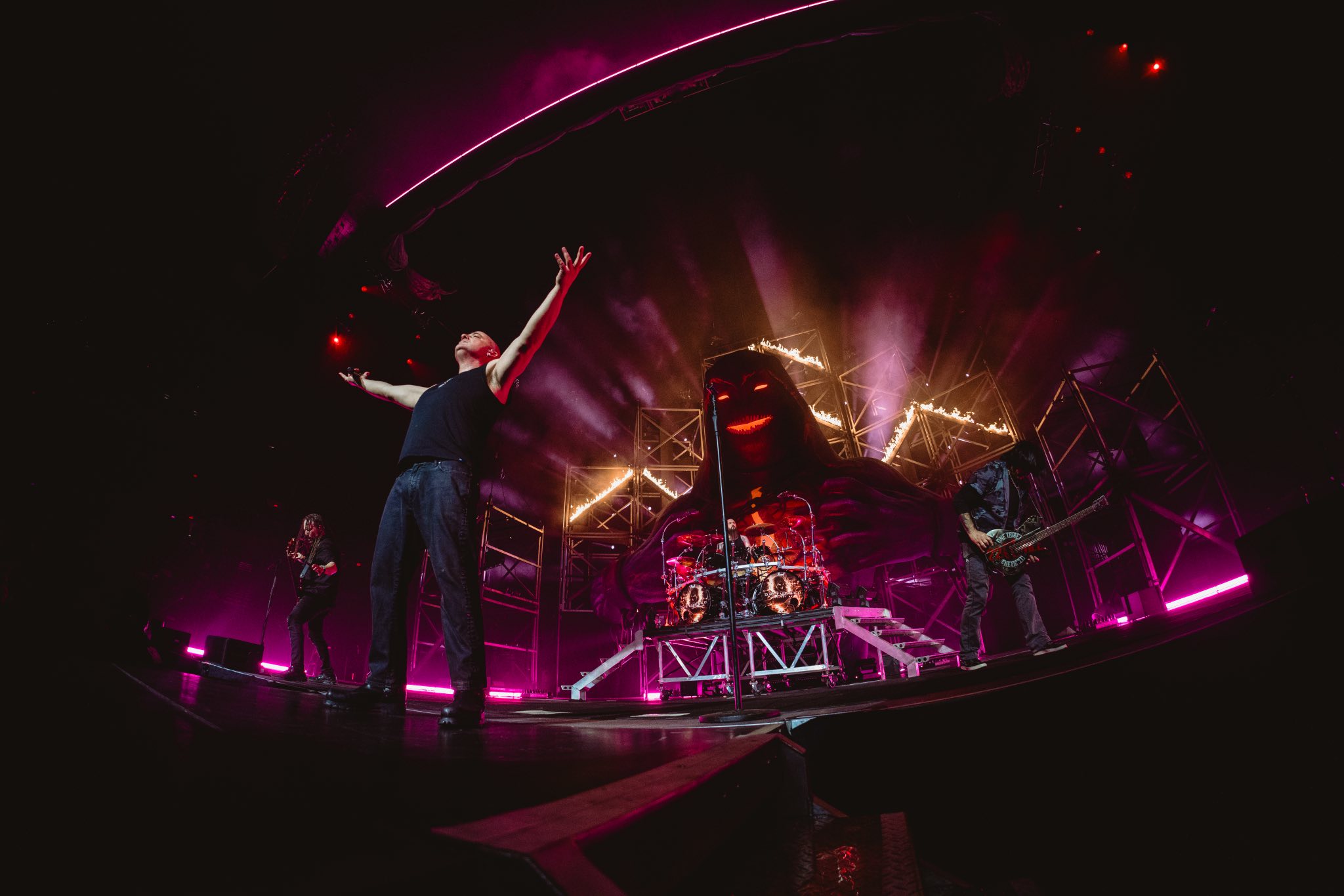
Photo: Britt Bowman
LOS ANGELES – Maybe it’s a coincidence… or some sort of karma… or perhaps it’s the psychological effect that a big flip of the calendar has on people… who knows? For whatever reason, though, the turn-of-the-last-century shook up a lot of things, among them was metal music, as a generation of new bands redefined the genre.
Front and center in this seismic shift was Disturbed, whose 5-time platinum debut album “The Sickness,” began attracting new fans to metal from the day it was released in 2000. A seminal record for some, a rite of passage for others, and a pure head banging experience for all, the album stands out as one of the most influential in the 21st century to date.
How to celebrate the 25th anniversary of such an important achievement? For the band, the answer was with a 51-date tour that kicked off at Ford Center Idaho Arena on February 12 and concludes at the OVO Hydro in Glasgow on October 28, with stops at The United Center, Madison Square Garden, and the Kia Forum along the way.
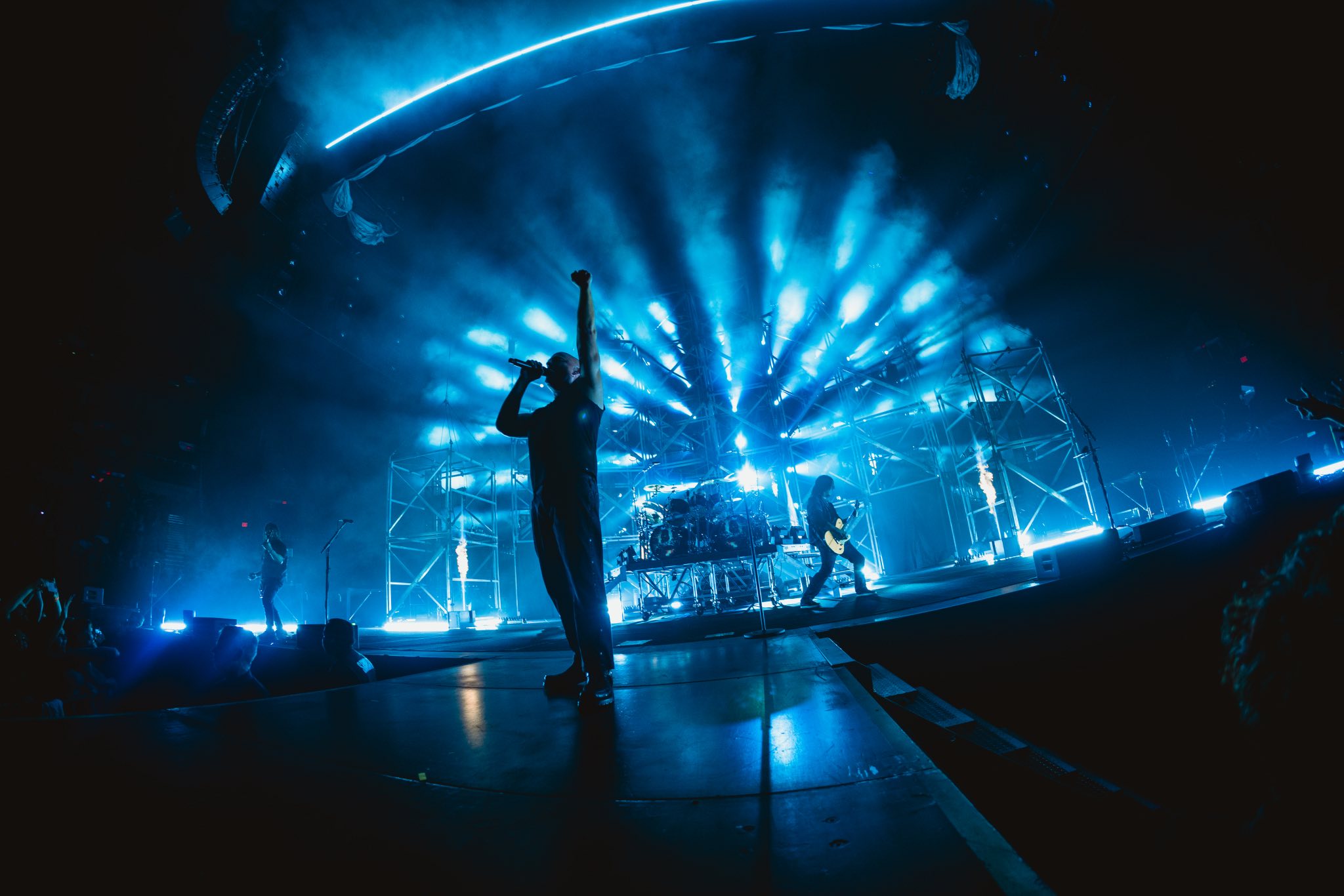
Photo: Britt Bowman
Setting the stage for the celebration of this iconic achievement, while serving up some intensely gripping looks, was a production and lighting design by Trevor Ahlstrand and Sooner Routhier of The Playground that included CHAUVET Professional Color STRIKE M motorized strobes and Maverick Storm 4 Profiles, which, like the rest of the rig, were supplied by Premier Global Production.
Joined by programmer Jason Giaffo and lighting director Joseph “Bambi” Morris, Ahlstrand and Routhier drew on direction from Disturbed to build a sense of anticipation right from the start, as the show began with a video montage of the band’s career, including clips from the original recording of their breakthrough album.
Then there was silence, before frontman David Draiman, clad in a black prison-jumpsuit, was wheeled out on stage strapped in a standing position like Hannibal Lecter. Breaking free, Draiman lashed out and began a set that included all the songs from “The Sickness.” (The show’s next set featured some of the band’s other hits.)
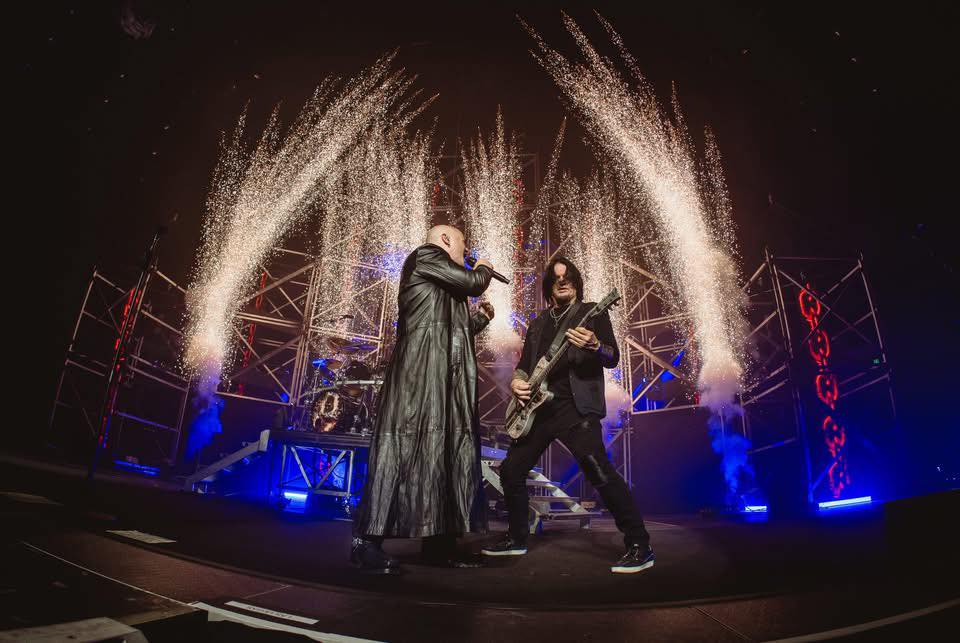
Photo: Britt Bowman
“Trevor and I worked with the band’s videographer, Rafa to build an intro and some intermission clips,” Routhier said of the show’s dramatic start. “All of the footage and creative direction came from the band. It created a nice intro moment that set a nostalgic scene for the audience.”
Ahlstrand explained the opening further. “We used the projection both in the beginning of the show and at the intermission. The opening of the show is very slow, with the Austrian building anticipation prior to wheeling David out. We wanted a faster open for the second section of the show, so we lifted the Austrian as the video concludes and intro begins playing, revealing a kabuki lit directly behind it. The kabuki is then dropped and sniffed away as the full band kicks into the hits section of the show.”
On the stage for both sections of the show, a prominent grid set a stark, hardcore back drop that matched the band’s music. “We wanted an industrial look with our cubic wall,” detailed Ahlstrand. “Within the cubic wall we placed video panels in both vertical and horizontal strips. We wanted a lot of the structure and stage to be lit by the light bouncing off of the video.

Photo: Britt Bowman
“Sporadically, but symmetrically, placed throughout the cube wall were profiles that did a good amount of the FX and accents,” he continued. “The grid upstage was meant to blow through the structure and create huge looks but also natural shadows and reflections from the structure.”
To underscore the intense mood, the design team leaned heavily into back and side light angles. “The design was purposely built without an overhead lighting rig to help create a massive monolith of scenic, video, and light,” said Routhier. “The empty space above the stage helped make the show look taller because it doesn’t have a false ceiling of truss and fixtures.”
Aside from fanning the intensity level, the monolithic design also added a distinctively dramatic effect to the concert. “The band wanted to incorporate theatrics into the show,” said Routhier. “In addition to arriving on stage in a straightjacket and mask, David gets electrocuted in an electric chair towards the end of The Sickness album. Another example of drama, and one of my favorites, is during the ‘Sound of Silence’ when local string players, who joined the band on stage, play the song on the end of the thrust with a flaming piano. The backdrop for this moment is a medieval hallway with flaming chandeliers.”
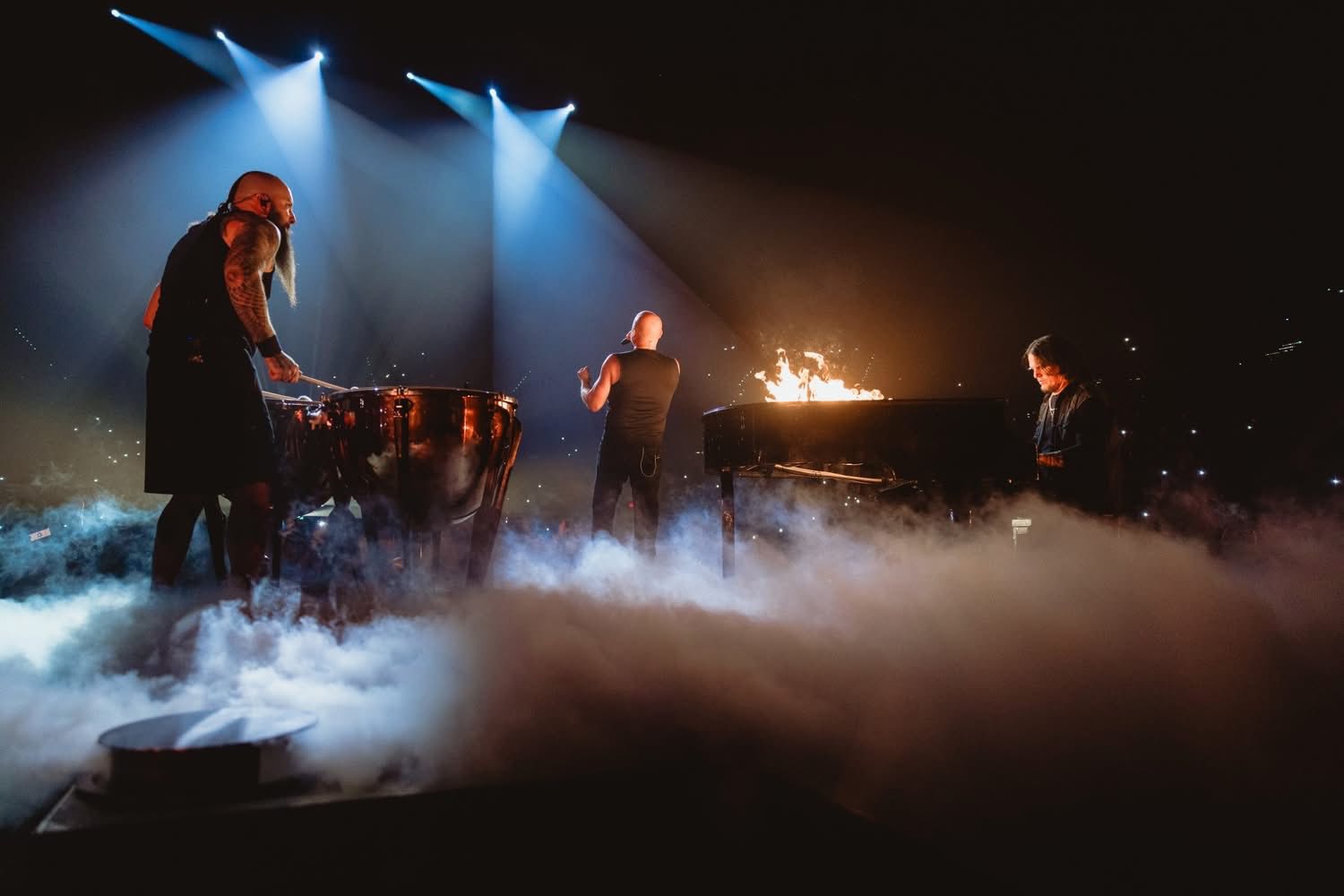
Photo: Britt Bowman
A collection of 42 Color STRIKE M fixtures on the scaffolding connect the cubic backdrop to the stage by punching through the scenic structure while also bathing it in light. The high output strobe-washes also enhanced the dramatic quality on stage by washing the haze that sometimes appeared behind the band.
“They worked great highlighting the scaffolding structure of the cube and adding to the industrial look of the rig,” said Giaffo. The fixtures also added to the versatility of the rig, noted Morris, by serving as strobes and creating color bumps.
Also contributing to the show were the rig’s 18 Maverick Storm 4 Profiles, arranged in six columns of three units. From this position, they were relied upon to apply textured side lighting of the band and the iconic inflatable of “The Guy” that periodically appeared on stage.
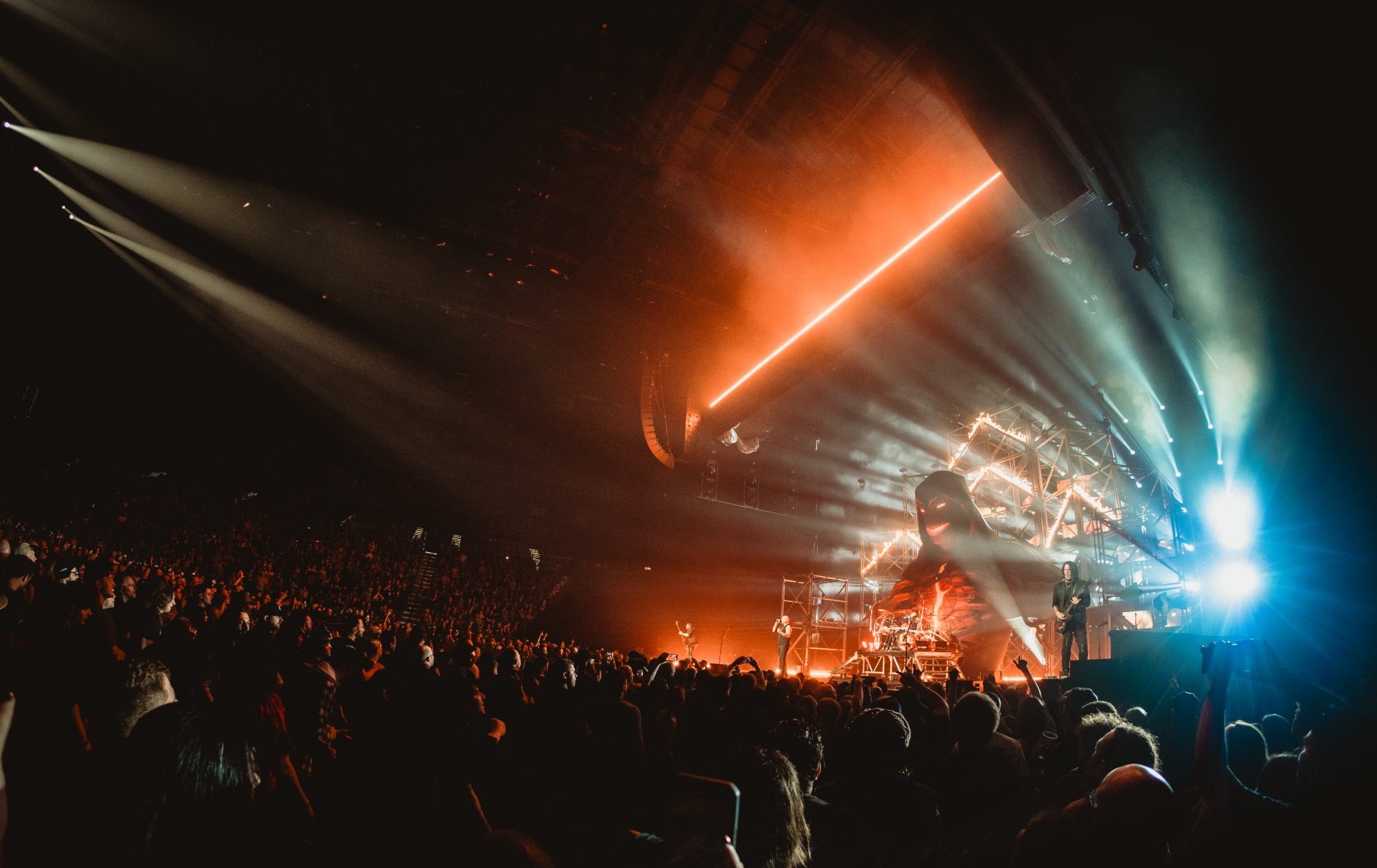
Photo: Britt Bowman
As is invariably the case in powerful achievement like this tour design, there was more than a little collaboration involved. Ahlstrand and Routhier are quick to give credit to tour manager Guy Sykes; production manager George Reeves; video crew chief David “Detroit” Klann; FOH engineer – Brad Divens; SFX Crew Chief Shane Davis; stage manager Nick Engle; Stephen “Creech” Anderson of PGP; and Christian Mulville of TAIT; Grant Sellers of Strictly FX, as well as Blair Bondy, Liam Tucker, Seth Newman, Zachary Singer, Aaron Ford, and Todd LePere.
Thanks to a lot of collaborative skills, not to mention some significant talent, the design team created a show that did justice to an iconic band on a tour that was more than a mere trip down memory lane, but a raw passionate celebration honoring a special force in metal music.